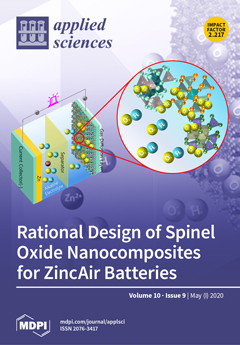Almond (
Prunus dulcis (Mill.) D.A. Webb) is one of the most important nut crops both in terms of area and production. Over the last few decades, an important part of the beneficial actions for health associated with their consumption was attributed to the phenolic compounds, mainly accumulated in almond skin. Interestingly, after cold-pressed oil extraction, most of these antioxidant phenolic compounds are retained in a skin-enriched by-product, a so-called almond cold-pressed oil residue. In Morocco, the fifth highest ranking producer in the world, this production generates an important part of this valuable byproduct. In the present study, using a multivariate Box–Behnken design, an ultrasound-assisted extraction method of phenolic compounds from Moroccan almond cold-pressed oil residue was developed and validated. Response surface methodology resulted in the optimal extraction conditions: the use of aqueous ethanol 53.0% (
v/
v) as a green solvent, applying an ultrasound frequency of 27.0 kHz for an extraction duration of 29.4 min. The present ultrasound-assisted extraction allowed substantial gains in terms of extraction efficiency compared to conventional heat reflux extraction. Applied to three different local
Beldi genotypes growing at three different experimental sites, the optimal conditions for ultrasound-assisted extraction led to a total phenolic content of 13.86 mg/g dry weight. HPLC analysis revealed that the main phenolic compounds from this valuable byproduct were: chlorogenic acid followed by protocatechuic acid,
p-hydroxybenzoic acid, and
p-coumaric acid. The accumulation of these phenolic compounds appeared to be more dependent on the genetic background than on the environmental impact here represented by the three experimental culture sites. Both in vitro cell free and cellular antioxidant assays were performed, and revealed the great potential of these extracts. In particular, correlation analysis provided evidence of the prominent roles of chlorogenic acid, protocatechuic acid, and
p-hydroxybenzoic acid. To summarize, the validated ultrasound-assisted extraction method presented here is a quick, green, simple and efficient for the possible valorization of antioxidant phenolic compounds from Moroccan almond cold-pressed oil residues, making it possible to generate extracts with attractive antioxidant activities for future nutraceutical and/or cosmetic applications.
Full article





